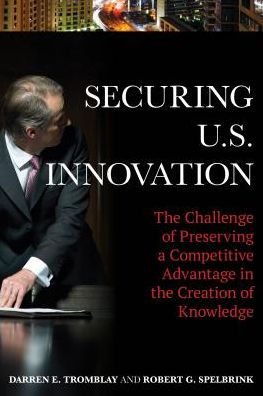5
1

Securing U.S. Innovation: The Challenge of Preserving a Competitive Advantage in the Creation of Knowledge
304
Securing U.S. Innovation: The Challenge of Preserving a Competitive Advantage in the Creation of Knowledge
304Paperback(New Edition)
$62.00
62.0
In Stock

Product Details
| ISBN-13: | 9781442256354 |
|---|---|
| Publisher: | Rowman & Littlefield Publishers, Inc. |
| Publication date: | 09/08/2016 |
| Edition description: | New Edition |
| Pages: | 304 |
| Product dimensions: | 5.90(w) x 8.90(h) x 0.90(d) |
About the Author
From the B&N Reads Blog
